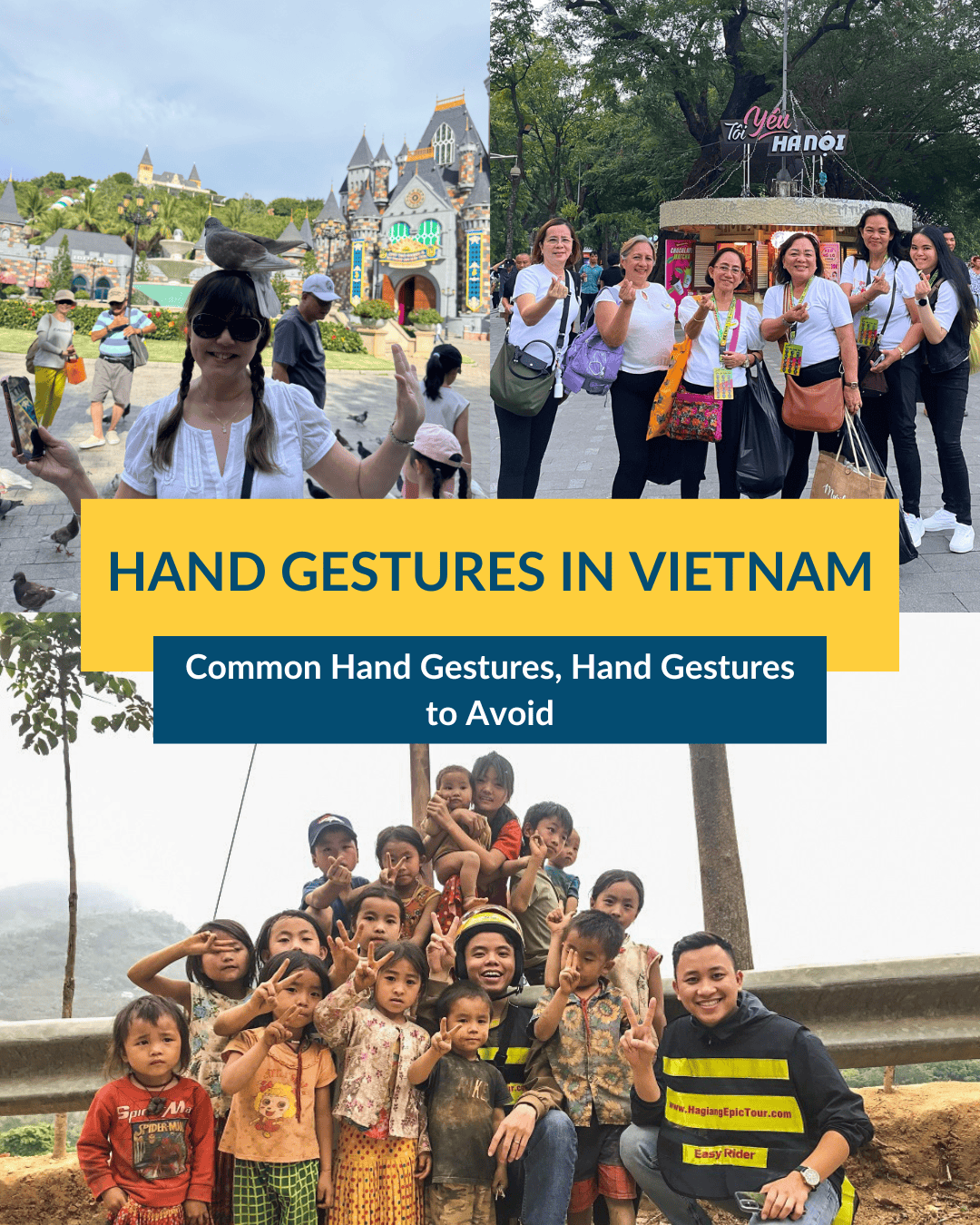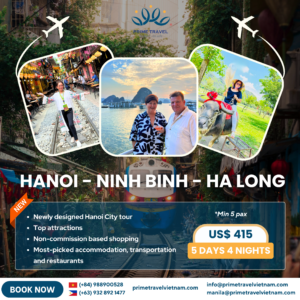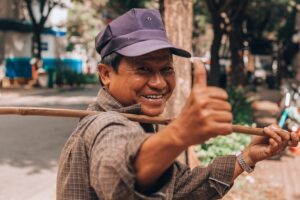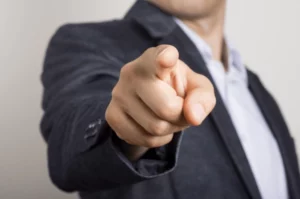
Hand Gestures in Vietnam You Should Know Before Traveling to Vietnam
When it comes to body language, it can vary across countries. Things that are common in some countries might be insulting in others.
In Vietnam, hand gestures play a big role in communication, often expressing respect, friendliness, or even disapproval without words. For travelers, understanding these gestures not only helps avoid misunderstandings but also makes it easier to connect with locals in a more authentic way.
In this guide, Prime Travel will walk you through common hand gestures in Vietnam you should know and avoid when coming to Vietnam.
Why hand gestures matter in Vietnam?
In Vietnamese culture, body language and non-verbal communications are as important as spoken words. A simple gesture can express friendliness, gratitude, or respect without saying a single word. At the same time, using the wrong gesture might come across as rude, even if you didn’t mean it.
For travelers, knowing these hand gestures goes beyond avoiding mistakes. It helps you blend in, shows that you respect local customs, and often makes your interactions more warm and welcoming. Whether you are ordering food, greeting someone, or bargaining at a market, a small gesture can make a big difference.
Common hand gestures in Vietnam you should know
Using both hands for respect
This is one of the most common hand gestures in Vietnam that even kids are taught from a very young age. Using both hands to give or receive something is a sign of respect. Whether it’s money, a gift, or even a business card, locals often extend both hands as a polite gesture. This shows appreciation and humility, especially when interacting with elders or in formal situations.
As a traveler, adopting this habit is a simple way to connect with Vietnamese culture. If you hand something with just one hand, it might appear careless or dismissive. By using both hands, you’ll make a positive impression and show locals that you value their traditions, which can make your interactions warmer and more meaningful.
If you’re interested in Vietnam travel and want a smooth travel without worrying about fitting in, Prime Travel is offering many tour packages from North to South Vietnam and even customized tours tailored to your own travel style.
The wrist twist to say No
When you have traveled to Vietnam, you probably encountered some vendors who might call out or make gestures with their hands to invite you to buy their goods. Instead of shaking their head, locals may twist their wrist outward with the palm facing up.
This simple movement signals “No” or “I don’t want it.” You might notice this when someone declines street food, turns down an offer, or refuses extra help. Moreover, you can make this simple hand gesture and keep walking away. It’s not rude, it’s just how Vietnamese people often do.
As a traveler, understanding this hand gesture will help you avoid confusion. If someone uses it, don’t take it personally; it’s just a polite way to decline. You can also use the wrist twist yourself when you want to say “No, thank you” without speaking. It’s a quick, respectful way to communicate and blend in with local customs.
Read more>>What Not To Do In Vietnam For Tourists in 2025
Hailing a taxi
In Vietnam, there’s a good chance that you will have to hail a cab in some touristy areas. You should hold your hand up and forward with the palm facing downward, and gently wave your fingers or hand. This gesture is widely recognized by taxi drivers and motorbike taxis across the country.
Next time you’re in Hanoi, Ho Chi Minh City, or Da Nang, try hailing a ride like a local—you’ll blend right in with the rhythm of the streets.
Greeting
In Vietnam, greetings are more subtle than in many Western countries. A firm handshake is not always the norm, especially in casual or rural settings. Instead, a light handshake or a gentle nod accompanied by a smile is often enough. When greeting elders or people of higher status, it’s polite to bow your head slightly while shaking hands with both hands. This small gesture shows respect and humility, which are highly valued in Vietnamese culture.
Smiles also play a big role in daily greetings. A warm smile can break the ice, even if you don’t share the same language. Unlike some cultures where physical contact like hugs or kisses is common, Vietnamese people usually keep greetings simple and respectful. As a traveler, understanding these nuances helps you make a positive impression and connect more genuinely with locals.
Thumbs up & OK sign
These hand gestures mean the same as they do in Western culture. It’s often used to show approval, agreement, or simply to say “good job.” Locals, especially younger generations, understand it well thanks to global influences. However, in more traditional or rural areas, overusing it may feel a bit unfamiliar. When in doubt, pair it with a friendly smile to ensure your intention comes across clearly.
Moreover, the OK sign, made by forming a circle with your thumb and index finger, is also understood by many Vietnamese as a symbol for agreement or that something is fine.
To make sure your trip is smooth and you’re equipped with all the knowledge you need to prepare for your Vietnam adventure, Prime Travel has a detailed safety guidebook that is sent to our fellow travellers so they can get to know all the basics.
If you’re interested in Vietnam travel, Prime Travel is offering many tour packages from North to South Vietnam and even customized tours tailored to your own travel style.
Hand gestures to avoid in Vietnam
Pointing with your finger
Like many other countries, pointing directly with your index finger can come across as rude or even aggressive. While you might use it casually at home to indicate a direction or an object, in Vietnamese culture, it often feels disrespectful, especially when directed at a person. Instead, locals usually gesture with a whole hand, palm facing down.
Cross your fingers
While this hand gesture stands for “Good luck!” in Western culture, crossed fingers in Vietnam are extremely insulting. It is considered as bad as the middle finger in Western culture. The reason why this hand gesture is frowned upon is that it refers to a sensitive part of the female body.
To avoid misunderstandings, it’s best to skip this gesture entirely while in Vietnam. If you want to wish someone luck, simply say it with words or use a smile and thumbs-up instead.
Placing hands on someone’s head
In Vietnamese culture, the head is considered the most sacred part of the body. Touching someone’s head, especially without permission, is seen as disrespectful. While this is particularly true for children and elders, it generally applies to everyone. Even a playful pat on the head may be misinterpreted.
If you want to show affection, try friendlier alternatives such as a smile, handshake, or verbal compliment.
Using your feet to gesture
Feet are considered the lowest and “dirtiest” part of the body in our culture. Using your feet to point at someone or something is highly disrespectful. Whether you are nudging an item with your foot, pointing toward a person, or resting your feet on a chair, locals may find it offensive. Avoid it at all costs. Always use your hands when indicating directions or picking things up.
Palm up when you call someone over
In Vietnam, this gesture is considered rude and disrespectful. Locals associate it with how people call for pets, so using it toward another person can easily cause offense or make you appear impolite.
If you need to get someone’s attention, the culturally correct way is to extend your hand with the palm facing down, then move your fingers in a gentle scooping motion toward yourself. In restaurants, it’s common among locals to raise their hands to get the attention of waiters.
Another tip for you is that you can pair it with a loud “Em oi” or “Bac oi” if the waiter is elderly.
Read more>>Tipping in Vietnam: Useful Tips for a Hassle-Free, Enjoyable Trip
Other gestures you should know
Sharing food
Another interesting thing about Vietnamese culture is how people share food during meals. Meals are often enjoyed family-style, with several dishes placed in the middle for everyone to share.
Passing food to others is not only common but also seen as a warm and caring gesture. When someone offers you food, it shows hospitality and respect, so it’s polite to accept at least a small portion. Refusing repeatedly might be considered unfriendly.
There are also some other cultural etiquette to remember:
- Always use the serving spoons or the opposite ends of your chopsticks when taking from shared plates, as using your personal chopsticks is considered unhygienic.
- It’s also polite to wait until elders or hosts start eating before you begin.
- Avoid leaving your chopsticks upright in your bowl, as this resembles incense offerings for the deceased.
No pats on the back
In many Western cultures, a pat on the back is seen as friendly encouragement or congratulations. However, in Vietnam, unless you are a close friend with the person and you’re both comfortable with it, this gesture can sometimes be misinterpreted.
Physical touch is generally reserved for close friends or family, and patting someone on the back, especially if you are not familiar with them, may feel intrusive or overly casual. This is even more sensitive in professional or formal settings, where maintaining personal space is important.
Instead of a pat on the back, a warm smile, a nod, or even a simple handshake is usually more appropriate.
Don’t give Vietnamese people yellow chrysanthemums
Giving flowers in Vietnam is a popular way to express emotions and leave a good impression on other people. However, not all flowers carry positive meanings.
Yellow chrysanthemums, for example, are strongly associated with funerals and mourning rituals. They are often placed on altars or graves as offerings to the deceased. Giving someone yellow chrysanthemums as a gift could unintentionally send the wrong message, suggesting loss or sadness instead of goodwill.
If you want to bring flowers to a Vietnamese host or give them as a gift, it’s better to choose other kinds of flowers.
Highly recommend Vietnam tours
- Highlights North of Vietnam Package (5 days 4 nights)

- 14-Day Cultural and Culinary Journey Through Vietnam

- 14-Day Vietnam Soft Adventure

- 10-Day Mekong Delta Cultural Experience from Vietnam to Cambodia

>>Explore more>>
Ninh Binh Boat Tours: Ultimate Guide to Tam Coc & Trang An
Travel To Vietnam with Kids: ULTIMATE Guide To Vietnam for Family Vacation
Essential Da Nang Guide and Itinerary: Best Things to Do for Travelers 2025















